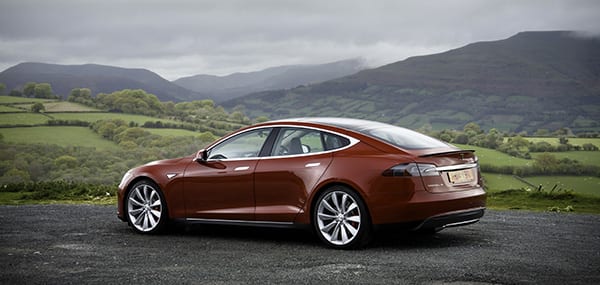Driverless farm tractors have been under development for some time, and are certainly making headway if Bear Flag Robotics has anything to say about it. They have developed a self-driving, remotely operated farm tractor that can operate in regions without GPS.
Further automation should increase productivity and may cut the cost of farming, as it usually does for other industries. However, it’s worth noting that food production has been extremely centralized for decades, resulting in expensive food, which is often produced using highly unethical processes. You want to know what is in your food, and where it comes from.
It also means that people have no control over what goes in/on their produce (pesticides, for example), and can’t opt in or out of using GMO seeds. The rate at which diseases can spread across large farms, infecting the food of thousands of people all at once is also worth noting.
However, decentralized food production (i’m referring to growing your own food at home) is not something that everyone wants to do by hand, and no one wants to have to deal with fungi and bugs. Add the fact that certain fruits and vegetables need to be grown within a certain temperature range, require a specific soil pH, and a certain amount of sunlight and it can be complicated in some cases.
In 2018, the technology to handle that for you exists. However, that hasn’t been put into production as far as I know, so let this be hypothetical.
The automated gardening concept this article discusses doesn’t pertain to harvesting. It is an automated vivarium with a built-in heater/cooler, water pump for sprinklers, a condenser to help recycle water (with the help of the cooler), automatic grow lights, and filtered ventilation.
Despite its complexity, it should still be possible on a small scale (i.e. in a person’s kitchen).
I’ve been experimenting with such a concept, and it isn’t yet finished, but I have learned a few things along the way, Such as:
- Soil and fertilizer odors need to be isolated if this is to be a trivial household appliance.
- Bright grow lamps can be annoying, but they are necessary. Tinted glass panels help with the glare (tremendously). My vivarium has a tinted glass that helps with that, so I can focus on what i’m doing.
- Parasite control is an issue for many plants. Isolation of vivariums with filtered (using HEPA filter) ventilation could be helpful.
- Automated watering using a small water pump + microcontroller could enable you to set and forget it (mostly). A pH control substance may be mixed in as well.
- Automated temperature control can be achieved using a fully enclosed vivarium, such as the one mentioned in #4. This may also facilitate the growth of some crops if the current season would normally be too hot or cold for them.
It is very important that we continually re-evaluate the viability of technologies whenever new advancements are made (for example: re-evaluating the viability of electric cars after improved battery technology is released).
Technological advancements that make automated, residential, sealed vivariums much more plausible than they were 40 years ago:
Improved LED Efficiency
Modern LEDs achieve efficiency levels that are ten times that of incandescent light bulbs (some up to 21 times, like a model I recently got my hands on). This means that a conventional 100-Watt grow lamp can be replaced with a 10-Watt LED lamp of the same brightness. For many who live in regions with high electricity prices, this suddenly makes it feasible to operate these grow lamps on a daily basis.
If your electricity rate is $0.30 USD/kWh, a single 100-Watt incandescent grow lamp could cost you $7.20 per month, or $86.40 per year. In contrast, the 10-Watt LED would cost you $0.72 per month, or $8.64 per year.
Bear mind that i’m referring to the warm white to cool white/3000-5000K (Kelvin, for colour temperature) variety of LEDs, which are not necessarily best for use as grow lamps.
Improved HVAC Efficiency
There are two key HVAC improvements that could have a profound impact here: Improved efficiency and affordable reverse-cycle air conditioners.
Reverse-cycle air conditioners are extremely efficient heaters (read Kompulsa’s heater page for more info) which consume 1/3 of the power that conventional inductive heaters do to produce the same amount of heat. When cooling, modern inverter air conditioners can easily consume less than half of the energy that their older non-inverter counterparts did (read Kompulsa’s air conditioner page for more info).
Cheaper, More Powerful Microcontrollers
You can find a $10 microcontroller equipped with an analog-to-digital converter and PWM timers that can monitor the temperature of your vivarium and adjust the brightness of the grow lamps (and turn them on as needed), and switch on your water pump periodically.
I published an LED lamp dimmer which could be easily adapted for vivariums (or you can turn it off manually in the evenings and just use it as is) here.
Other considerations outside that include the growing threat of climate change, and the environmental/financial cost of shipping produce around the world. Modern technologies can help to increase local food production, reducing reliance on expensive shipments which produce greenhouse gas and smog emissions.







